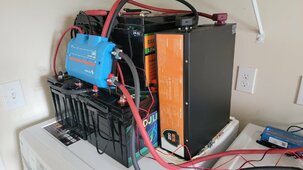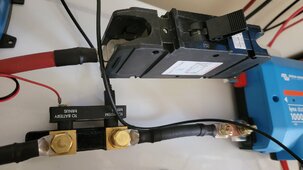DPC
Solar Enthusiast
I used to hide Co2 fire extinguishers in the garages.@robbob2112 I can not disagree, and it is certainly worth extended research in my book.
Just glancing at the link, that extinguisher is not co2 based anyway. It uses Clean agent chemical: FK-5-1-12 Which is a cooling agent.
Better some clean up than total loss though.
I now have a new topic of research!
In the event of an electrical fire it was less mess to clean, but also if you have a run away diesel engine the best way to snuff it out is let it draw the Co2 into the engine and starve it of oxygen.
Both a fast way to stop a potential grenading engine fire and limit the damage and clean up after the fire.





